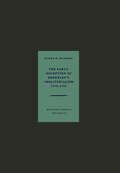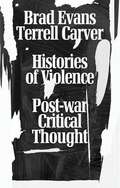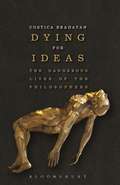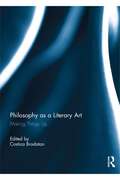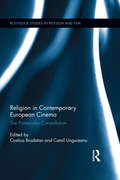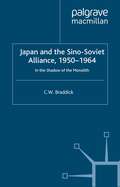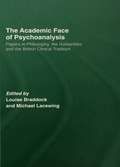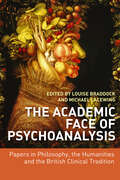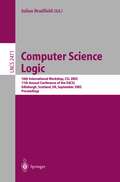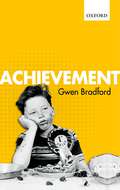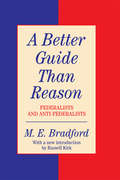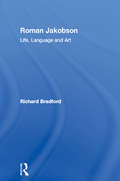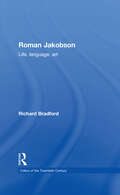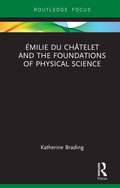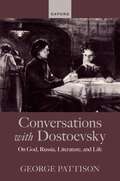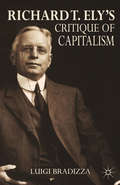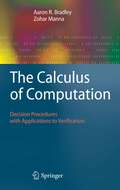- Table View
- List View
The Early Reception of Berkeley’s Immaterialism 1710–1733
by Harry M. BrackenBy the time of Immanuel Kant, Berkeley had been caIled, among other things, a sceptic, an atheist, a solipsist, and an idealist. In our own day, however, the suggestion has been ad vanced that Berkeley is bett er understood if interpreted as a realist and man of common sense. Regardless of whether in the end one decides to treat hirn as a subjective idealist or as a re alist, I think it has become appropriate to inquire how Berkeley's own contemporaries viewed his philosophy. Heretofore the gen erally accepted account has been that they ignored hirn, roughly from the time he published the Principles 01 Human Knowledge until1733 when Andrew Baxter's criticism appeared. The aim of the present study is to correct that account as weIl as to give some indication not only of the extent, but more important, the role and character of several of the earliest discussions. Second arily, I have tried to give some clues as to the influence this early material may have had in forming the image of the "good" Bish op that emerged in the second half of the eighteenth century. For it is my hope that such clues may prove helpful in freeing us from the more severe strictures of the traditional interpretive dogmas.
Histories of Violence: Post-war Critical Thought
by Brad Evans and Terrell CarverWhile there is a tacit appreciation that freedom from violence will lead to more prosperous relations among peoples, violence continues to be deployed for various political and social ends. Yet the problem of violence still defies neat description, subject to many competing interpretations.Histories of Violence offers an accessible yet compelling examination of the problem of violence as it appears in the corpus of canonical figures – from Hannah Arendt to Frantz Fanon, Michel Foucault to Slavoj Žižek – who continue to influence and inform contemporary political, philosophical, sociological, cultural, and anthropological study.Written by a team of internationally renowned experts, this is an essential interrogation of post-war critical thought as it relates to violence.
Dying for Ideas: The Dangerous Lives of the Philosophers
by Costica BradatanWhat do Socrates, Hypatia, Giordano Bruno, Thomas More, and Jan Patocka have in common? First, they were all faced one day with the most difficult of choices: stay faithful to your ideas and die or renounce them and stay alive. Second, they all chose to die. Their spectacular deaths have become not only an integral part of their biographies, but are also inseparable from their work. A "death for ideas" is a piece of philosophical work in its own right; Socrates may have never written a line, but his death is one of the greatest philosophical best-sellers of all time.Dying for Ideas explores the limit-situation in which philosophers find themselves when the only means of persuasion they can use is their own dying bodies and the public spectacle of their death. The book tells the story of the philosopher's encounter with death as seen from several angles: the tradition of philosophy as an art of living; the body as the site of self-transcending; death as a classical philosophical topic; taming death and self-fashioning; finally, the philosophers' scapegoating and their live performance of a martyr's death, followed by apotheosis and disappearance into myth.While rooted in the history of philosophy, Dying for Ideas is an exercise in breaking disciplinary boundaries. This is a book about Socrates and Heidegger, but also about Gandhi's "fasting unto death" and self-immolation; about Girard and Passolini, and self-fashioning and the art of the essay.
Dying for Ideas: The Dangerous Lives of the Philosophers
by Costica BradatanWhat do Socrates, Hypatia, Giordano Bruno, Thomas More, and Jan Patocka have in common? First, they were all faced one day with the most difficult of choices: stay faithful to your ideas and die or renounce them and stay alive. Second, they all chose to die. Their spectacular deaths have become not only an integral part of their biographies, but are also inseparable from their work. A "death for ideas" is a piece of philosophical work in its own right; Socrates may have never written a line, but his death is one of the greatest philosophical best-sellers of all time.Dying for Ideas explores the limit-situation in which philosophers find themselves when the only means of persuasion they can use is their own dying bodies and the public spectacle of their death. The book tells the story of the philosopher's encounter with death as seen from several angles: the tradition of philosophy as an art of living; the body as the site of self-transcending; death as a classical philosophical topic; taming death and self-fashioning; finally, the philosophers' scapegoating and their live performance of a martyr's death, followed by apotheosis and disappearance into myth.While rooted in the history of philosophy, Dying for Ideas is an exercise in breaking disciplinary boundaries. This is a book about Socrates and Heidegger, but also about Gandhi's "fasting unto death" and self-immolation; about Girard and Passolini, and self-fashioning and the art of the essay.
Philosophy as a Literary Art: Making Things Up
by Costica BradatanDespite philosophers’ growing interest in the relation between philosophy and literature in general, over the last few decades comparatively few studies have been published dealing more narrowly with the literary aspects of philosophical texts. The relationship between philosophy and literature is too often taken to be "literature as philosophy" and very rarely "philosophy as literature." It is the dissatisfaction with this one-sidedness that lies at the heart of the present volume. Philosophy has nothing to lose by engaging in a serious process of literary self-analysis. On the contrary, such an exercise would most likely make it stronger, more sophisticated, more playful and especially more self-reflexive. By not moving in this direction, philosophy places itself in the position of not following what has been deemed, since Socrates at least, the worthiest of all philosophical ideals: self-knowledge. This book was originally published as a special issue of The European Legacy.
Philosophy as a Literary Art: Making Things Up
by Costica BradatanDespite philosophers’ growing interest in the relation between philosophy and literature in general, over the last few decades comparatively few studies have been published dealing more narrowly with the literary aspects of philosophical texts. The relationship between philosophy and literature is too often taken to be "literature as philosophy" and very rarely "philosophy as literature." It is the dissatisfaction with this one-sidedness that lies at the heart of the present volume. Philosophy has nothing to lose by engaging in a serious process of literary self-analysis. On the contrary, such an exercise would most likely make it stronger, more sophisticated, more playful and especially more self-reflexive. By not moving in this direction, philosophy places itself in the position of not following what has been deemed, since Socrates at least, the worthiest of all philosophical ideals: self-knowledge. This book was originally published as a special issue of The European Legacy.
Religion in Contemporary European Cinema: The Postsecular Constellation (Routledge Studies in Religion and Film)
by Costica Bradatan Camil UngureanuThe religious landscape in Europe is changing dramatically. While the authority of institutional religion has weakened, a growing number of people now desire individualized religious and spiritual experiences, finding the self-complacency of secularism unfulfilling. The "crisis of religion" is itself a form of religious life. A sense of complex, subterraneous interaction between religious, heterodox, secular and atheistic experiences has thus emerged, which makes the phenomenon all the more fascinating to study, and this is what Religion in Contemporary European Cinema does. The book explores the mutual influences, structural analogies, shared dilemmas, as well as the historical roots of such a "post-secular constellation" as seen through the lens of European cinema. Bringing together scholars from film theory and political science, ethics and philosophy of religion, philosophy of film and theology, this volume casts new light on the relationship between the religious and secular experience after the death of the death of God.
Religion in Contemporary European Cinema: The Postsecular Constellation (Routledge Studies in Religion and Film)
by Costica Bradatan Camil UngureanuThe religious landscape in Europe is changing dramatically. While the authority of institutional religion has weakened, a growing number of people now desire individualized religious and spiritual experiences, finding the self-complacency of secularism unfulfilling. The "crisis of religion" is itself a form of religious life. A sense of complex, subterraneous interaction between religious, heterodox, secular and atheistic experiences has thus emerged, which makes the phenomenon all the more fascinating to study, and this is what Religion in Contemporary European Cinema does. The book explores the mutual influences, structural analogies, shared dilemmas, as well as the historical roots of such a "post-secular constellation" as seen through the lens of European cinema. Bringing together scholars from film theory and political science, ethics and philosophy of religion, philosophy of film and theology, this volume casts new light on the relationship between the religious and secular experience after the death of the death of God.
Cinema and Sacrifice (Angelaki: New Work in the Theoretical Humanities)
by Costica Bradatan Camil Constantin UngureanuCinema has a long history of engaging with the theme of sacrifice. Given its capacity to stimulate the imagination and resonate across a wide spectrum of human experiences, sacrifice has always attracted filmmakers. It is on screen that the new grand narratives are sketched, the new myths rehearsed, and the old ones recycled. Sacrifice can provide stories of loss and mourning, betrayal and redemption, death and renewal, destruction and re-creation, apocalypses and the birth of new worlds.The contributors to this volume are not just scholars of film but also students of religion and literature, philosophers, ethicists, and political scientists, thus offering a comprehensive and interdisciplinary approach to the relationship between cinema and sacrifice. They explore how cinema engages with sacrifice in its many forms and under different guises, and examine how the filmic constructions, reconstructions and misconstructions of sacrifice affect society, including its sacrificial practices.This book was originally published as a special issue of Angelaki: journal of the theoretical humanities.
Japan and the Sino-Soviet Alliance, 1950-1964 (St Antony's Series)
by C. BraddickJapan and the Sino-Soviet Alliance 1950-1964 reveals the divisive impact of the Sino-Soviet Alliance on Japanese domestic politics and foreign relations during the turbulent years between 1950 and 1964. Drawing on extensive Japanese sources and unprecedented access to previously classified government documents, C.W. Braddick exposes the myths shrouding this formative era in Japan's postwar development.
The Academic Face of Psychoanalysis: Papers in Philosophy, the Humanities, and the British Clinical Tradition
by Louise Braddock Michael LacewingEver since Freud, psychoanalysts have explored the connections between psychoanalysis and literature and psychoanalysis and philosophy, while literary criticism, social science and philosophy have all reflected on and made use of ideas from psychoanalytic theory. The Academic Face of Psychoanalysis presents contributions from these fields and gives the reader an insight into different understandings and applications of psychoanalytic theory. This book comprises twelve contributions from experts in their fields covering philosophy, psychoanalysis, sociology and literary theory. The chapters are divided into three distinct sections: Psychoanalysis Philosophy Social science and literary theory Louise Braddock and Michael Lacewing successfully bring these contributions together with an in-depth introduction that allows the reader to explore the connections between the different disciplines. The multi-disciplinary approach to this book is rare; it will appeal to academics and students, from the subject areas of psychoanalysis, humanities and social science.
The Academic Face of Psychoanalysis: Papers in Philosophy, the Humanities, and the British Clinical Tradition
by Louise Braddock Michael LacewingEver since Freud, psychoanalysts have explored the connections between psychoanalysis and literature and psychoanalysis and philosophy, while literary criticism, social science and philosophy have all reflected on and made use of ideas from psychoanalytic theory. The Academic Face of Psychoanalysis presents contributions from these fields and gives the reader an insight into different understandings and applications of psychoanalytic theory. This book comprises twelve contributions from experts in their fields covering philosophy, psychoanalysis, sociology and literary theory. The chapters are divided into three distinct sections: Psychoanalysis Philosophy Social science and literary theory Louise Braddock and Michael Lacewing successfully bring these contributions together with an in-depth introduction that allows the reader to explore the connections between the different disciplines. The multi-disciplinary approach to this book is rare; it will appeal to academics and students, from the subject areas of psychoanalysis, humanities and social science.
Computer Science Logic: 16th International Workshop, CSL 2002, 11th Annual Conference of the EACSL, Edinburgh, Scotland, UK, September (Lecture Notes in Computer Science #2471)
by Julian BradfieldThe Annual Conference of the European Association for Computer Science Logic, CSL 2002, was held in the Old College of the University of Edinburgh on 22–25 September 2002. The conference series started as a programme of Int- national Workshops on Computer Science Logic, and then in its sixth meeting became the Annual Conference of the EACSL. This conference was the sixteenth meeting and eleventh EACSL conference; it was organized by the Laboratory for Foundations of Computer Science at the University of Edinburgh. The CSL 2002 Programme Committee considered 111 submissions from 28 countries during a two week electronic discussion; each paper was refereed by at least three reviewers. The Committee selected 37 papers for presentation at the conference and publication in these proceedings. The Programme Committee invited lectures from Susumu Hayashi, Frank Neven, and Damian Niwinski; ´ the papers provided by the invited speakers appear at the front of this volume. In addition to the main conference, two tutorials – ‘Introduction to Mu- Calculi’ (Julian Brad?eld) and ‘Parametrized Complexity’ (Martin Grohe) – were given on the previous day.
Achievement
by Gwen BradfordFrom the magisterial to the mundane, achievements play a role in the best kind of human life, and many people think that they are of such importance that they are worth pursuing at the expense of serious sacrifices. Yet for all that, no philosophers have devoted more than a few short passages to discerning what makes achievements valuable, or even what makes something an achievement to begin with. Gwen Bradford presents the first systematic account of what achievements are, and what it is about them that makes them worth doing. It turns out that more things count as achievements than we might have thought, and that what makes them valuable isn't something we usually think of as good. It turns out that difficulty, perhaps surprisingly, plays a central part in characterizing achievements and their value: achievements are worth the effort. But just what does it mean for something to be difficult, and why is it valuable? A thorough analysis of the nature of difficulty is given, and ultimately, the best account of the value of achievements taps into perfectionist axiology. But not just any perfectionist theory of value will do, and in this book we see a new perfectionist theory developed that succeeds in capturing the value of achievement better than its predecessors.
Achievement
by Gwen BradfordFrom the magisterial to the mundane, achievements play a role in the best kind of human life, and many people think that they are of such importance that they are worth pursuing at the expense of serious sacrifices. Yet for all that, no philosophers have devoted more than a few short passages to discerning what makes achievements valuable, or even what makes something an achievement to begin with. Gwen Bradford presents the first systematic account of what achievements are, and what it is about them that makes them worth doing. It turns out that more things count as achievements than we might have thought, and that what makes them valuable isn't something we usually think of as good. It turns out that difficulty, perhaps surprisingly, plays a central part in characterizing achievements and their value: achievements are worth the effort. But just what does it mean for something to be difficult, and why is it valuable? A thorough analysis of the nature of difficulty is given, and ultimately, the best account of the value of achievements taps into perfectionist axiology. But not just any perfectionist theory of value will do, and in this book we see a new perfectionist theory developed that succeeds in capturing the value of achievement better than its predecessors.
A Better Guide Than Reason: Federalists and Anti-federalists (The Library of Conservative Thought)
by M.E. BradfordIn this seminal volume, M. E. Bradford defines the Old Whig political tradition in American thought, showing that the inheritance of the prescriptive anti-federalists still lives. For Bradford, important elements in our heritage from the American Revolution have been systematically hidden from our view by anachronistic and partisan scholarship. He believes that other, more ideological components have been emphasized at the expense of the rest. Here he attempts to return us to our heritage.
A Better Guide Than Reason: Federalists and Anti-federalists (The Library of Conservative Thought)
by M.E. BradfordIn this seminal volume, M. E. Bradford defines the Old Whig political tradition in American thought, showing that the inheritance of the prescriptive anti-federalists still lives. For Bradford, important elements in our heritage from the American Revolution have been systematically hidden from our view by anachronistic and partisan scholarship. He believes that other, more ideological components have been emphasized at the expense of the rest. Here he attempts to return us to our heritage.
Roman Jakobson: Life, Language and Art (Critics of the Twentieth Century)
by Richard BradfordIn Roman Jakobson Richard Bradford reasserts the value of Jakobson's work, arguing that he has a great deal to offer contemporary critical theory and providing a critical appraisal the sweep of Jakobson's career. Bradford re-establishes Jakobson's work as vital to our understanding of the relationship between language and poetry. By exploring Jakobson's thesis that poetry is the primary object language, Roman Jakobson: Life, Language, Art offers a new reading of his work which includes the most radical elements of modernism. This book will be invaluable to students of Jakobson and to anyone interested in the development of critical theory, linguistics and stylistics.
Roman Jakobson: Life, Language and Art (Critics of the Twentieth Century)
by Richard BradfordIn Roman Jakobson Richard Bradford reasserts the value of Jakobson's work, arguing that he has a great deal to offer contemporary critical theory and providing a critical appraisal the sweep of Jakobson's career. Bradford re-establishes Jakobson's work as vital to our understanding of the relationship between language and poetry. By exploring Jakobson's thesis that poetry is the primary object language, Roman Jakobson: Life, Language, Art offers a new reading of his work which includes the most radical elements of modernism. This book will be invaluable to students of Jakobson and to anyone interested in the development of critical theory, linguistics and stylistics.
Émilie Du Châtelet and the Foundations of Physical Science (Routledge Focus on Philosophy)
by Katherine BradingThe centerpiece of Émilie Du Châtelet’s philosophy of science is her Foundations of Physics, first published in 1740. The Foundations contains epistemology, metaphysics, methodology, mechanics, and physics, including such pressing issues of the time as whether there are atoms, the appropriate roles of God and of hypotheses in scientific theorizing, how (if at all) bodies are capable of acting on one another, and whether gravity is an action-at-a-distance force. Du Châtelet sought to resolve these issues within a single philosophical framework that builds on her critique and appraisal of all the leading alternatives (Cartesian, Newtonian, Leibnizian, and so forth) of the period. The text is remarkable for being the first to attempt such a synthetic project, and even more so for the accessibility and clarity of the writing. This book argues that Du Châtelet put her finger on the central problems that lay at the intersection of physics and metaphysics at the time, and tackled them drawing on the most up-to-date resources available. It will be a useful source for students and scholars interested in the history and philosophy of science, and in the impact of women philosophers in the early modern period.
Émilie Du Châtelet and the Foundations of Physical Science (Routledge Focus on Philosophy)
by Katherine BradingThe centerpiece of Émilie Du Châtelet’s philosophy of science is her Foundations of Physics, first published in 1740. The Foundations contains epistemology, metaphysics, methodology, mechanics, and physics, including such pressing issues of the time as whether there are atoms, the appropriate roles of God and of hypotheses in scientific theorizing, how (if at all) bodies are capable of acting on one another, and whether gravity is an action-at-a-distance force. Du Châtelet sought to resolve these issues within a single philosophical framework that builds on her critique and appraisal of all the leading alternatives (Cartesian, Newtonian, Leibnizian, and so forth) of the period. The text is remarkable for being the first to attempt such a synthetic project, and even more so for the accessibility and clarity of the writing. This book argues that Du Châtelet put her finger on the central problems that lay at the intersection of physics and metaphysics at the time, and tackled them drawing on the most up-to-date resources available. It will be a useful source for students and scholars interested in the history and philosophy of science, and in the impact of women philosophers in the early modern period.
Philosophical Mechanics in the Age of Reason
by Katherine Brading Marius StanFrom pebbles to planets, tigers to tables, pine trees to people; animate and inanimate, natural and artificial; bodies are everywhere. Bodies populate the world, acting and interacting with one another, and they are the subject-matter of Newton's laws of motion. But what is a body? And how can we know how they behave? In Philosophical Mechanics in the Age of Reason, Katherine Brading and Marius Stan examine the struggle for a theory of bodies. At the beginning of the 18th century, physics was the branch of philosophy that studied bodies in general. Its primary task was to provide a qualitative account of the nature of bodies, including their essential properties, causal powers, and generic behaviors. Pursued by a variety of figures both canonical (from Leibniz to Kant) and less familiar (from Du Ch?telet and Euler to d'Alembert and Lagrange), this proved a difficult task. At stake were the appropriate epistemologies and methods for theorizing about the natural world. Solutions demanded the combined resources of philosophy, physics, and mechanics: what Brading and Stan call a ?philosophical mechanics.? Brading and Stan analyze a century of widespread, concerted efforts to solve ?the problem of bodies,? they examine the consequences of the many failures, both for the problem itself and for philosophy more generally. They reveal relationships among disparate themes of 18th century physics and philosophy, from the nature of matter to the motion of a vibrating string; causation to the principle of least action; and the role of subtle matter in collision theory to analytic mechanics. All of these, Brading and Stan argue, are related to the eventual emergence of physics as an independent discipline, autonomous from philosophy, more than a century after Newton's Principia. This book provides a new framing of natural philosophy and its transformations in the Enlightenment; and it proposes an account of how physics and philosophy evolved into distinct fields of inquiry.
Philosophical Mechanics in the Age of Reason
by Katherine Brading Marius StanFrom pebbles to planets, tigers to tables, pine trees to people; animate and inanimate, natural and artificial; bodies are everywhere. Bodies populate the world, acting and interacting with one another, and they are the subject-matter of Newton's laws of motion. But what is a body? And how can we know how they behave? In Philosophical Mechanics in the Age of Reason, Katherine Brading and Marius Stan examine the struggle for a theory of bodies. At the beginning of the 18th century, physics was the branch of philosophy that studied bodies in general. Its primary task was to provide a qualitative account of the nature of bodies, including their essential properties, causal powers, and generic behaviors. Pursued by a variety of figures both canonical (from Leibniz to Kant) and less familiar (from Du Ch?telet and Euler to d'Alembert and Lagrange), this proved a difficult task. At stake were the appropriate epistemologies and methods for theorizing about the natural world. Solutions demanded the combined resources of philosophy, physics, and mechanics: what Brading and Stan call a ?philosophical mechanics.? Brading and Stan analyze a century of widespread, concerted efforts to solve ?the problem of bodies,? they examine the consequences of the many failures, both for the problem itself and for philosophy more generally. They reveal relationships among disparate themes of 18th century physics and philosophy, from the nature of matter to the motion of a vibrating string; causation to the principle of least action; and the role of subtle matter in collision theory to analytic mechanics. All of these, Brading and Stan argue, are related to the eventual emergence of physics as an independent discipline, autonomous from philosophy, more than a century after Newton's Principia. This book provides a new framing of natural philosophy and its transformations in the Enlightenment; and it proposes an account of how physics and philosophy evolved into distinct fields of inquiry.
Richard T. Ely’s Critique of Capitalism
by L. BradizzaThis book examines the work and thought of Richard T. Ely in light of his rejection of capitalism and view toward individualism. It concludes that there are real problems with Ely's theories and the principles of Progressivism, and addresses the implications of this for current American political thought.
The Calculus of Computation: Decision Procedures with Applications to Verification
by Aaron R. Bradley Zohar MannaWritten with graduate and advanced undergraduate students in mind, this textbook introduces computational logic from the foundations of first-order logic to state-of-the-art decision procedures for arithmetic, data structures, and combination theories. The textbook also presents a logical approach to engineering correct software. Verification exercises are given to develop the reader's facility in specifying and verifying software using logic. The treatment of verification concludes with an introduction to the static analysis of software, an important component of modern verification systems. The final chapter outlines courses of further study.
